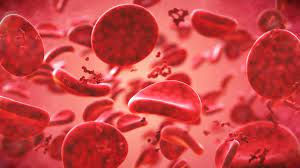A GUIDE TO BLOOD TYPE VARIANTS
- Rabia Büke Güllü
- 3 Eki 2022
- 2 dakikada okunur

Blood types are one of the various spheres in which humans can be classified biologically. First failed attempts of medical surgeries indicate that blood transfusion between certain blood groups is lethal. Nevertheless, it wasn’t until the early 20th century that blood type variants were acknowledged as a crucial factor in donating and receiving blood.
Karl Landsteiner, also known as the founder of the most common blood type system, AB0, is credited for his profound studies in identifying blood components. He stated that blood types differentiate based on the antigens in one’s erythrocytes(red blood cells). With the advancement of science, more than 300 antigens have been discovered and new methods to group them are being used.
The genes related to blood types are inherited by three alleles: A, B, and 0(which was priorly referred to as “C”). Those who carry the A-antigen or the B-antigen are of the blood types A or B, respectively. When both antigens are present in the erythrocytes, the outcome is type AB thanks to the co-dominance of the alleles A and B. In the absence of both antigens, the recessive type 0 is expressed. The name “0” is claimed to be derived from the German word “ohne”, which is a replacement for “without”. Alongside antigens, there are some “antibodies” placed in the blood plasma, making it unlikely for transfusion between different blood types. Antibodies are capable of adhering to and fighting foreign substances as an immune response. All humans possess the corresponding natural antibodies of the blood antigens they don’t express. For instance, A-antigen and anti-B can exist in the human body simultaneously.
The molecular differences between the antigens are confirmed to be the structures of the glycoprotein chain on the erythrocyte membranes. The dominant H allele in the human genome is responsible for producing the “precursor” H substance, which is later transformed into A or B antigens in the presence of either allele. There are no additions to type 0, and it maintains the same structure as the original end to the H antigen’s glycoprotein chain, “fucose”. Almost all humans can yield the H substance, except for a rare condition called “the Bombay phenotype”, where the H substance can’t be produced due to the two recessive h alleles inherited from both parents.
Another notable antigen in the erythrocytes is the “D-antigen”, universally recognized as the “Rh factor”. The Rh genotypes of both parents are examined in planned parenthood to avoid Rh incompatibility in a pregnancy, erythroblastosis fetalis. Rh incompatibility may occur for the second Rh-positive fetus of an Rh-negative mother and an Rh-positive father. The first Rh-positive pregnancy causes the mother to produce anti-Rh antibodies, which are bound to attack the erythrocytes of the second Rh-positive fetus. Although this condition poses a deathly threat to the fetus, it can be avoided by injecting a medication called “anti-D (Rh0) immunoglobulin” into the Rh-negative mother.
The discovery of blood types facilitated medical surgeries by preventing agglutination, which is the clumping of particles in the blood. The field of blood grouping will continue to expand as the structures of antigens and antibodies still
harbor great mysteries within.




Comentários